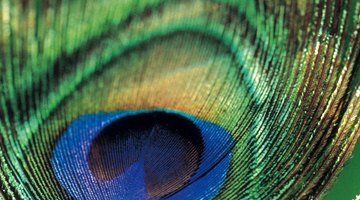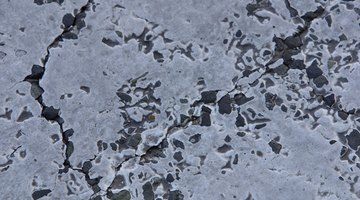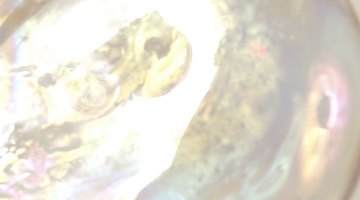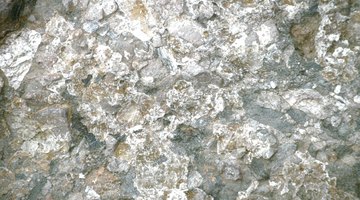What Are the Different Types of Iridescent Finishes?
Table of Contents
In a sense, an iridescent finish is colorless, but the high sheen and translucent effect gives off a light refraction that appears to have various rainbow-like hues and colors in it. An iridescent finish is glossy, shiny and slick.

Cultured pearls, ivory, butterfly wings and other natural items are examples of what iridescent finishes should look like on different manufactured products, from paints and furnishings to buttons and jewels.
Architecture

The application of metallic and iridescent finishes in an architectural process requires expert skill, the right kinds of materials and equipment, and a good air supply. Metallic and iridescent coatings are translucent and easily penetrated by ultraviolet light. Spray paints and polyurethane semi-gloss or satin coatings such as those used for sculptures, signs and watercraft are smooth finishes.
Lighting

The most common type of iridescent finish is on the many different types of available lighting, including outdoor ceiling lights, Peruvian, Quoizel and Tiffany lamps, and indoor recessed lighting. Iridescent light bulbs such as flame-shaped halogens and novelty Christmas lights come in many different styles and finishes.
Cosmetics

Iridescent powders are mixtures of Mica -- a light, soft heat-resistant mineral -- and color pigments that give skin and other facial and body features a glossy sheen, glitter or glow. These powdery or creamy cosmetic minerals are used alone or mixed with foundations, moisturizers or other cosmetics.
Fashion and Jewelry

A shiny iridescent finish seems to recede optically. These finishes are best for highlights and accents. The iridescent "rainbow" finish is also known as aurora borealis in that it can totally change the original color of a bead in different light, or when turned in different directions under light. Iridescent bead colors and stylized or plain buttons come in matte or metallic finishes. On fabrics, organza and taffeta can both have iridescent finishes that make cloth appear to glisten under the right lighting. Sequins also give off an iridescent finish.
Other Iridescent Finishes

Dishes, glass, kitchen appliances, airbrush paints, wall finishes and sometimes even meats such as roast beef can have an iridescent color or streak. Some fishing rods and lures are made with a polychromatic or prismatic iridescent effect to attract fish with the reflection in the water.
Producing Iridescent Coatings: Mica Pigment

You can produce an iridescent reflecting surface by using mica powder with a metal oxide mixture, such as titanium oxide. Titanium oxide is a white powder used as a pigment because when it's mixed with other powders or minerals, it changes the color of the mineral depending on how much titanium oxide is used. The chemical reaction between the elements make the color, or pigment, of the base mineral.
References
Resources
Writer Bio
Renee Greene has been writing professionally since 1984 when she began as a news clerk for "The Columbus (Ga.) Ledger-Enquirer." She has written nonfiction books and a book of Haikus. She holds an associate degree from Phillips Junior College and is an English major at Mesa (Ariz.) Community College.
Photo Credits
- Comstock/Comstock/Getty Images
- Comstock/Comstock/Getty Images
- Hemera Technologies/AbleStock.com/Getty Images
- Jupiterimages/Polka Dot/Getty Images
- Jupiterimages/Photos.com/Getty Images
- Hemera Technologies/AbleStock.com/Getty Images
- Thomas Northcut/Digital Vision/Getty Images
- Jupiterimages/Photos.com/Getty Images
More Articles



